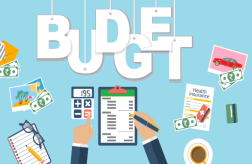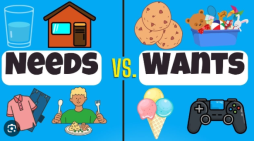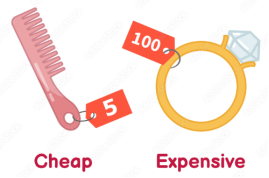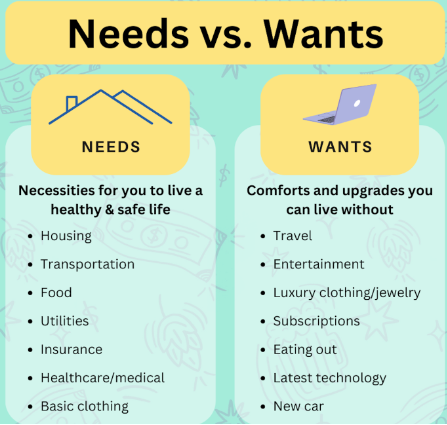Інтерактивні методи навчання на уроках англійської мови. Проєктна робота «Розумні покупки – як витрачати розумно» CLIL
Інтерактивні методи навчання на уроках англійської мови
Інтерактивні методи навчання в сучасній педагогіці займають важливе місце, особливо при викладанні іноземних мов, зокрема англійської. В умовах глобалізації та інтенсивного обміну інформацією володіння англійською мовою є ключовим фактором успішної комунікації, а інтерактивні методи сприяють ефективному опануванню мовними навичками.
Інтерактивне навчання – це форма організації навчального процесу, в якій акцент ставиться на взаємодію учнів один з одним, з вчителем, а також з навчальним матеріалом. Основна мета таких методів – стимулювати активну участь учнів у процесі навчання, підвищити їхню мотивацію та інтерес до предмета.
Переваги інтерактивних методів на уроках англійської мови
- Активізація спілкування: Інтерактивні методи дозволяють учням постійно практикувати розмовну англійську мову в реальних або змодельованих ситуаціях. Вони вчаться не тільки сприймати та відтворювати інформацію, але й будувати власні висловлювання, вести діалог, дискутувати.
- Покращення розуміння матеріалу: Використання інтерактивних вправ, таких як рольові ігри або групові проекти, допомагає учням глибше зрозуміти нові лексичні та граматичні конструкції через практичну діяльність.
- Розвиток критичного мислення: Через такі методи, як дебати, мозкові штурми та аналіз текстів, учні розвивають уміння мислити критично, ставити запитання та аналізувати інформацію.
- Індивідуалізація навчання: Інтерактивні методи дозволяють вчителю адаптувати навчальні завдання відповідно до рівня знань учнів, їхніх інтересів та здібностей. Це сприяє індивідуальному підходу, який є особливо важливим у мовному навчанні.
Приклади інтерактивних методів
- Рольові ігри (Role Play): Це один з найефективніших методів, який передбачає імітацію реальних життєвих ситуацій, де учні можуть відчути себе в ролі туриста, покупця або співрозмовника на бізнес-зустрічі. Такий підхід розвиває комунікативні навички, розширює словниковий запас та допомагає подолати мовний бар’єр.
- Групові проекти: В рамках групових проектів учні працюють над певним завданням разом, що стимулює розвиток командних навичок та вміння співпрацювати що є дуже важливим для формування життєвих навичок. Наприклад, учні можуть створювати презентації, готувати сценарії для виступів або досліджувати культурні, географічні, наукові, економічні аспекти англомовних країн.
- Мозковий штурм (Brainstorming): Цей метод залучає учнів до колективного пошуку ідей на задану тему. Це дозволяє не тільки активізувати знання, але й вчить висловлювати думки англійською мовою, аналізувати та порівнювати інформацію.
- Інтерактивні платформи: Використання цифрових ресурсів, таких як інтерактивні дошки, онлайн-ігри або мобільні додатки для вивчення англійської мови, підвищує інтерес до уроку та робить навчання сучасним і динамічним. Наприклад, платформи як Kahoot! або Quizlet, wordwall, Learning Apps, Liveworksheets дозволяють в ігровій формі перевірити знання учнів, повторити вивчене та закріпити матеріал.
- Дебати: Організація дебатів англійською мовою допомагає учням практикувати побудову аргументованих висловлювань, відстоювати власну думку та розуміти інші точки зору. Це сприяє розвитку навичок усного мовлення та активного слухання.
Виклики інтерактивного навчання
Незважаючи на численні переваги, інтерактивні методи можуть мати і певні труднощі у впровадженні. Для їх успішного використання необхідно ретельно готуватися до уроку, враховувати рівень підготовки учнів, їхні індивідуальні особливості та бажання брати активну участь у роботі. Крім того, вчитель має бути готовим до того, що процес може вимагати більше часу на пояснення та організацію, порівняно з традиційними методами.
Висновок
Інтерактивні методи навчання на уроках англійської мови є ефективним інструментом, який дозволяє зробити навчальний процес цікавим, динамічним та результативним. Вони сприяють розвитку не лише мовних навичок, але й критичного мислення, комунікативних та командних здібностей. Важливо, щоб вчитель інтегрував ці методи у свої уроки, адаптуючи їх до потреб та можливостей учнів, адже саме так можна досягти найкращих результатів у навчанні англійської мови.
Проєкт: "Smart Shopping – How to Spend Wisely"
Тривалість: 2 тижні (3-4 уроки по 45 хвилин)
Методика CLIL
CLIL (Content and Language Integrated Learning) дозволяє учням вивчати мову одночасно з опануванням інших предметів, у даному випадку – економіки, математики та фінансової грамотності.
Цілі проєкту
-
Лінгвістичні:
- Збагачення словникового запасу з теми shopping, money, prices.
- Формування навичок говоріння та діалогічного мовлення.
- Практика вживання модальних дієслів (must, should, can).
- Навчання побудови питань та відповідей у контексті покупок.
-
Фінансова грамотність (зміст):
- Формування навичок планування бюджету.
- Усвідомлення важливості раціонального використання грошей.
- Розуміння різниці між потребами (needs) та бажаннями (wants).
-
Soft Skills:
- Робота в команді.
- Презентаційні навички.
- Критичне мислення та аналіз.
Ключові компетентності
- Мовна компетентність: розвиток навичок говоріння, читання, письма та аудіювання.
- Математична компетентність: вміння працювати з числами, цінами та бюджетами.
- Соціальна компетентність: співпраця в групах та прийняття рішень.
Хід проєкту
Урок 1: Вступ до теми (45 хвилин)
Тема: Vocabulary Building and Needs vs. Wants
-
Warm-Up (5 хв):
- Учні діляться своїми улюбленими покупками (What do you usually buy?)
- Do your parents give you some pocket money?
- How much money do you spend every month?
-
Vocabulary Work (15 хв):
- Введення слів: budget, shopping list, needs, wants, save, spend, price, expensive, cheap, discount, sale.
- Shopping Vocabulary









Гра "Match the Word" (визначення слів на картках або онлайн гра).
Shopping Vocabulary / Meaning Crossword
Budget – the amount of money you can spend.
Example: My budget for shopping is 500 UAH
Shopping list – a list of things you want to buy.
Example: I write a shopping list before going to the store.
Needs – things you must have to live.
Example: Food, water, and clothes are needs.
Wants – things you would like to have, but they are not necessary.
Example: A new phone is a want, not a need.
Save – to keep money for the future.
Example: I save money to buy a bike
Spend – to use money to buy things.
Example: I spend 50 UAH on lunch.
Price – the amount of money you pay for something.
Example: The price of the book is 100 UAH.
Expensive – something that costs a lot of money.
Example: A new car is very expensive.
Cheap – something that does not cost much money.
Example: These shoes were cheap – only 200 UAH.
Discount – a lower price, less than the original price.
Example: The store gives a 20% discount on clothes.
Sale – a time when things are sold at a lower price.
Example: I buy many things during the winter sale.
- Activity "Needs vs. Wants" (15 хв):
Watch the video and discuss in groups your Needs and Wants
- Учні обговорюють у групах: What do we need to survive? What do we want to enjoy?
- Групи формують список потреб та бажань.
-
Reflection (10 хв):
- Учні презентують свої списки.

Домашнє завдання: Записати 5 речей, які вони купили минулого тижня, і класифікувати їх як needs або wants.
Урок 2: Робота з текстом та числовими даними (45 хвилин)
Тема: Shopping Budgets and Prices
-
Warm-Up (5 хв):
- Учні обговорюють домашнє завдання.
-
Reading Activity (15 хв):
- Текст: "How to Save Money While Shopping".
- Завдання: прочитайте текст та підберіть заголовки до кожного абзацу у тексті та поради для економного шопінгу.
|
Shopping can be fun, but sometimes we spend more money than we need. Here are some easy tips and strategies to help you save money and shop wisely.
1. ________________________ Before you go shopping, write a list of the things you really need. A list helps you focus and avoid buying unnecessary items. 2. ________________________ Decide how much money you can spend before you start shopping. A budget helps you control your spending and avoid wasting money. 3. ________________________ Before you buy something, check prices in different stores or online. You can often find the same item at a lower price. 4. ________________________ Ask yourself: “Do I really need this?” Sometimes we buy things because they look nice, but we don’t use them later. Always think about your needs, not just your wants. 5. ________________________ Many stores give special discounts, coupons, or loyalty cards to save money. Use them whenever possible. 6. ________________________ Try to shop on weekdays instead of weekends. Stores are less crowded, and you can focus better on your list and budget.
By following these simple strategies, you can save money and become a smart shopper. Remember: “Save today, enjoy tomorrow!” Now, it’s your turn! What strategies do you use to save money while shopping?
|
Titles A Make a Shopping List B Compare Prices C Buy Only What You Need D Set a Budget E Use Discounts and Coupons F Plan Your Shopping Day
Tips a Example: During sales seasons, like Black Friday or holidays, you can buy items for 20-50% less. b Tip: Look for discounts, special offers, or sales. Some stores have “Buy 2, Get 1 Free” deals. c Strategy: Avoid shopping when you’re hungry or bored. It makes you buy more! d Tip: Always check your fridge, wardrobe, or supplies at home so you don’t buy something you already have. e Example: If you plan to spend 500 UAH, stick to this amount and don’t spend more. f Tip: Go shopping with cash, not a credit card, so you don’t overspend.
|
-
Math in Shopping (15 хв):
- Учні отримують завдання: порахувати вартість товарів зі списку з урахуванням знижок (наприклад: The original price is $20. There is a 25% discount.).
Product List with Discounts
- Wireless Headphones – 2,400₴ 20% off
- Smartphone Case – 400₴ 10% off
- Laptop Stand – 1,200₴
- Gaming Mouse – 100 ₴ 15% off
- Desk Lamp - 700₴
- Reusable Water Bottle - 300₴
- Bluetooth Speaker – 1800₴ 25% off
- Portable Charger – 1,100₴
- Noise-Cancelling Earbuds – 2,500₴ 30% off
- Yoga Mat -- 600₴
1. Wireless Headphones – 2,400 грн (зі знижкою 20% – 1,920 грн)
2. Smartphone Case – 400 грн (зі знижкою 10% – 360 грн)
3. Laptop Stand – 1,200 грн
4. Gaming Mouse – 1,000 грн (зі знижкою 15% – 850 грн)
5. Desk Lamp – 700 грн
6. Reusable Water Bottle – 300 грн
7. Bluetooth Speaker – 1,800 грн (зі знижкою 25% – 1,350 грн)
8. Portable Charger – 1,100 грн
9. Noise-Cancelling Earbuds – 2,500 грн (зі знижкою 30% – 1,750 грн)
10. Yoga Mat – 600 грн
Discussion (10 хв):
- What strategies do you use to save money?
Домашнє завдання: Створити "Shopping List" для уявного бюджету в ____грн.
Урок 3: Створення проєкту (45 хвилин)
Тема: Group Work – Smart Shopping
-
Warm-Up (5 хв):
- Учні обговорюють свої домашні "shopping lists".
-
Project Task (30 хв):
-
Групам (по 4-5 учнів) дається завдання:
- Спланувати покупки для родини з урахуванням бюджету сім`ї.
- Створити презентацію у форматі poster або PowerPoint.
- Продемонструвати економію грошей (знижки, альтернативні покупки).
-
Групам (по 4-5 учнів) дається завдання:
-
Preparation for Presentation (10 хв):
- Групи обирають спікерів та оформлюють роботу.
Домашнє завдання: Завершити роботу над презентацією.
Урок 4: Презентація проєктів (45 хвилин)
Тема: Presentation and Feedback
-
Group Presentations (30 хв):
- Кожна група представляє свій проєкт (3-5 хвилин).
- Обов'язково: пояснити, як вони розподілили бюджет.
-
Feedback Session (10 хв):
- Учні дають зворотний зв'язок іншим групам.
- Обговорення: What did you learn about smart shopping?
-
Teacher’s Reflection (5 хв):
- Підсумок досягнень учнів.
Оцінювання
- Формувальне оцінювання: спостереження за участю учнів у групових завданнях.
-
Підсумкове оцінювання: оцінка презентації за критеріями:
- Зміст (раціональність бюджету, креативність).
- Мовленнєве оформлення (використання лексики та граматики).
- Робота в команді.
Очікувані результати
Після завершення проєкту учні зможуть:
- Використовувати ключову лексику з теми Shopping and Money.
- Планувати бюджет і розрізняти needs та wants.
- Вдосконалити навички говоріння та презентації.
- Співпрацювати у групах для досягнення спільної мети.
Ресурси:
- Картки зі словами.
- Текст для читання (adapted articles).
- Матеріали для створення презентацій (папір, маркери, ноутбуки).
Text
How to Save Money While Shopping
Shopping can be fun, but sometimes we spend more money than we need. Here are some easy tips and strategies to help you save money and shop wisely.
1. Make a Shopping List
Before you go shopping, write a list of the things you really need. A list helps you focus and avoid buying unnecessary items.
Tip: Always check your fridge, wardrobe, or supplies at home so you don’t buy something you already have.
2. Set a Budget
Decide how much money you can spend before you start shopping. A budget helps you control your spending and avoid wasting money.
Example: If you plan to spend 500 UAH, stick to this amount and don’t spend more.
3. Compare Prices
Before you buy something, check prices in different stores or online. You can often find the same item at a lower price.
Tip: Look for discounts, special offers, or sales. Some stores have “Buy 2, Get 1 Free” deals.
4. Buy Only What You Need
Ask yourself: “Do I really need this?” Sometimes we buy things because they look nice, but we don’t use them later. Always think about your needs, not just your wants.
Strategy: Avoid shopping when you’re hungry or bored. It makes you buy more!
5. Use Discounts and Coupons
Many stores give special discounts, coupons, or loyalty cards to save money. Use them whenever possible.
Example: During sales seasons, like Black Friday or holidays, you can buy items for 20-50% less.
6. Plan Your Shopping Day
Try to shop on weekdays instead of weekends. Stores are less crowded, and you can focus better on your list and budget.
Tip: Go shopping with cash, not a credit card, so you don’t overspend.
By following these simple strategies, you can save money and become a smart shopper. Remember: “Save today, enjoy tomorrow!”
Now, it’s your turn! What strategies do you use to save money while shopping?
Vocabulary to Remember:
- Budget: план витрат
- Discount: знижка
- Coupon: купон
- Save: заощаджувати
- Spend: витрачати
- Unnecessary: непотрібний


про публікацію авторської розробки
Додати розробку




